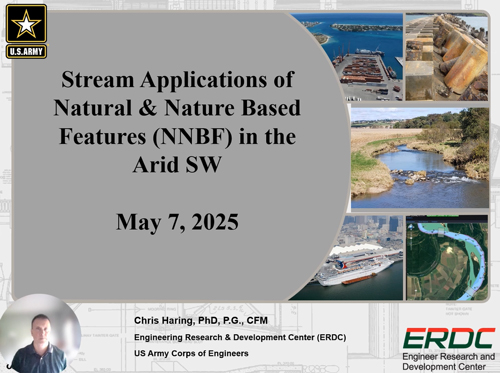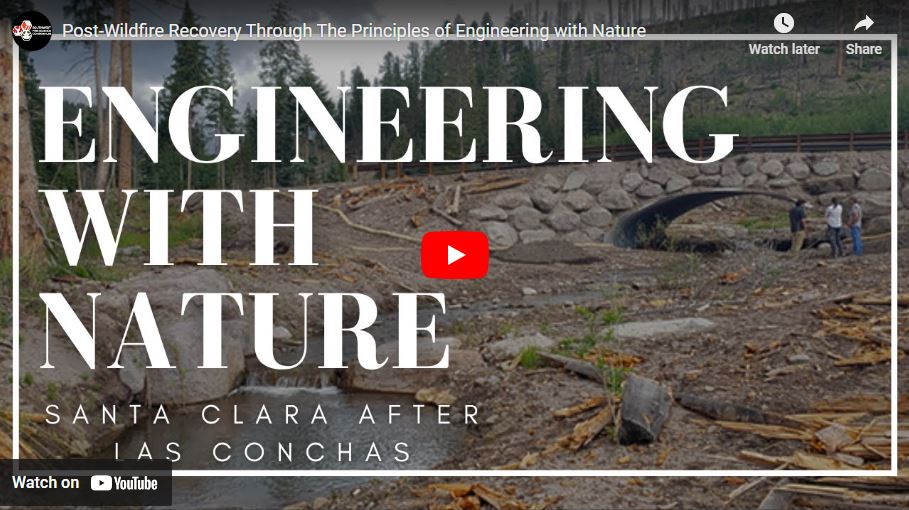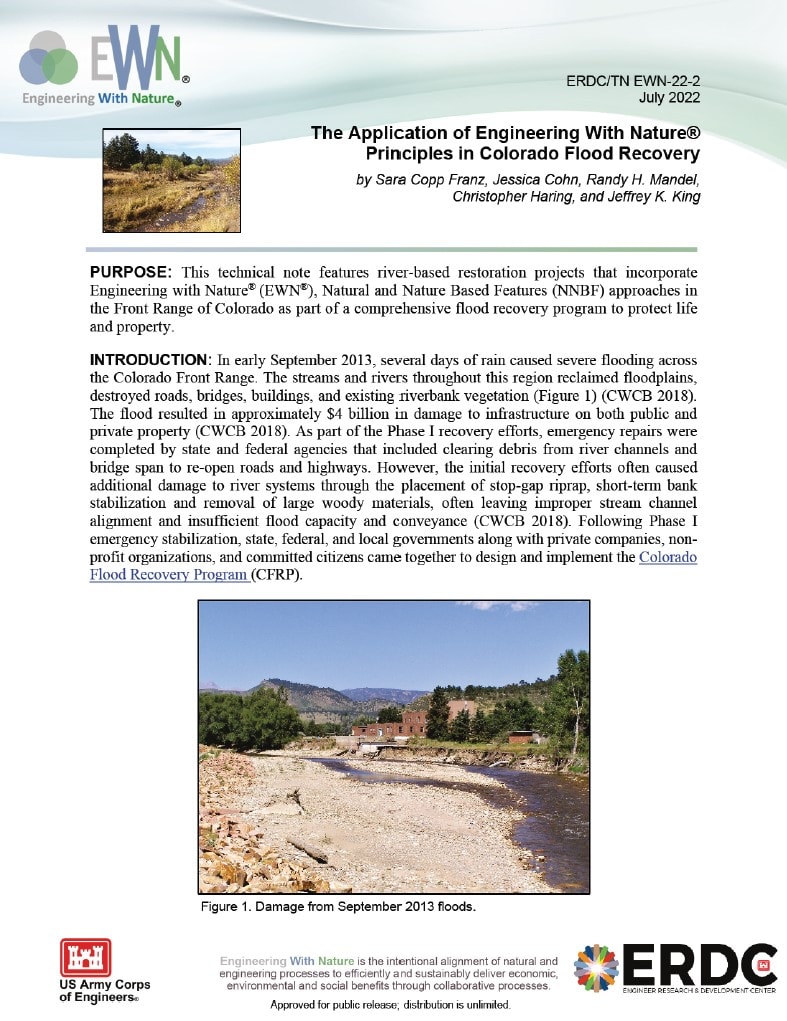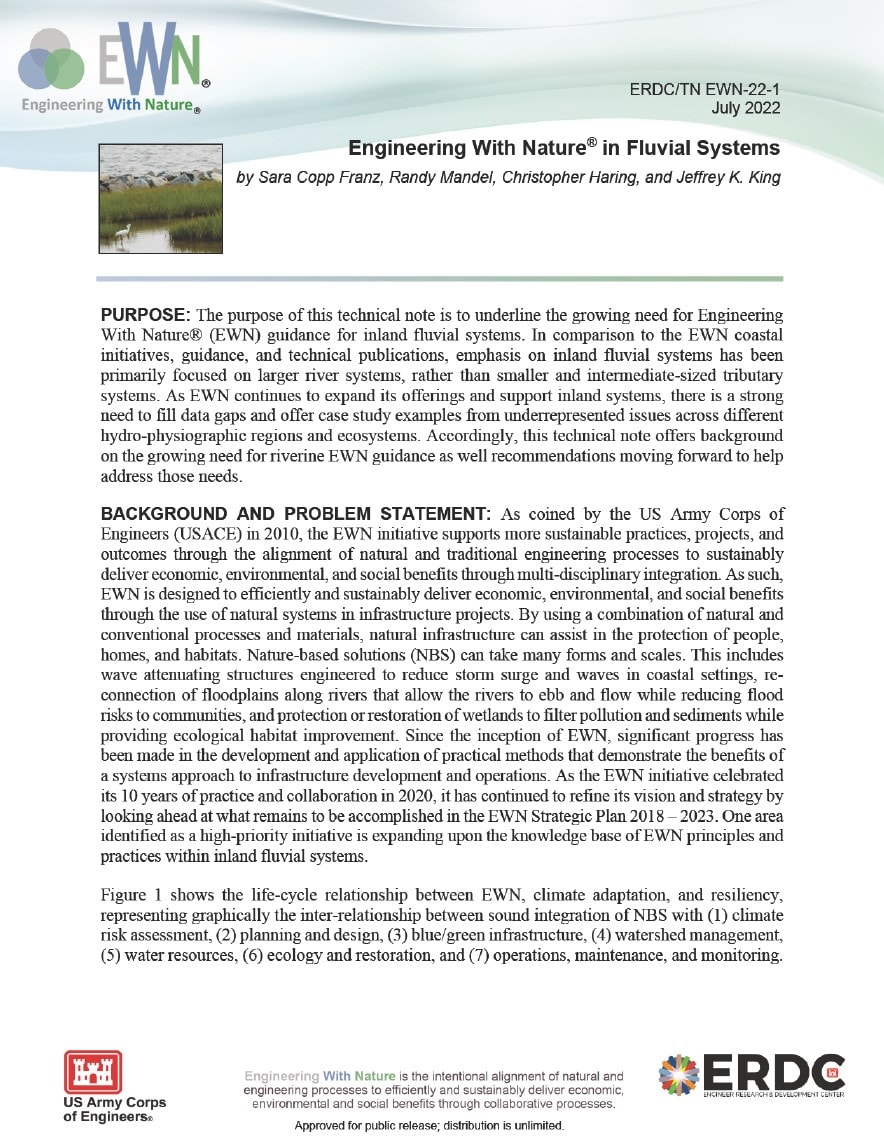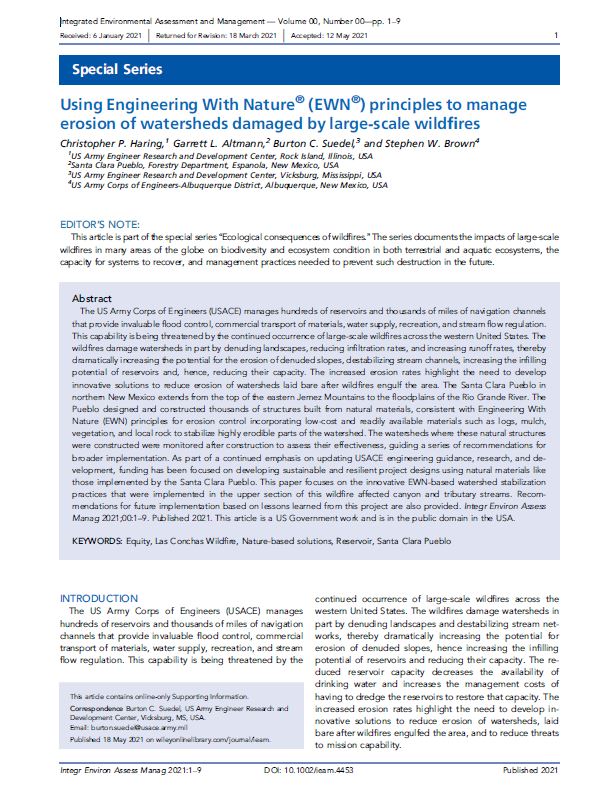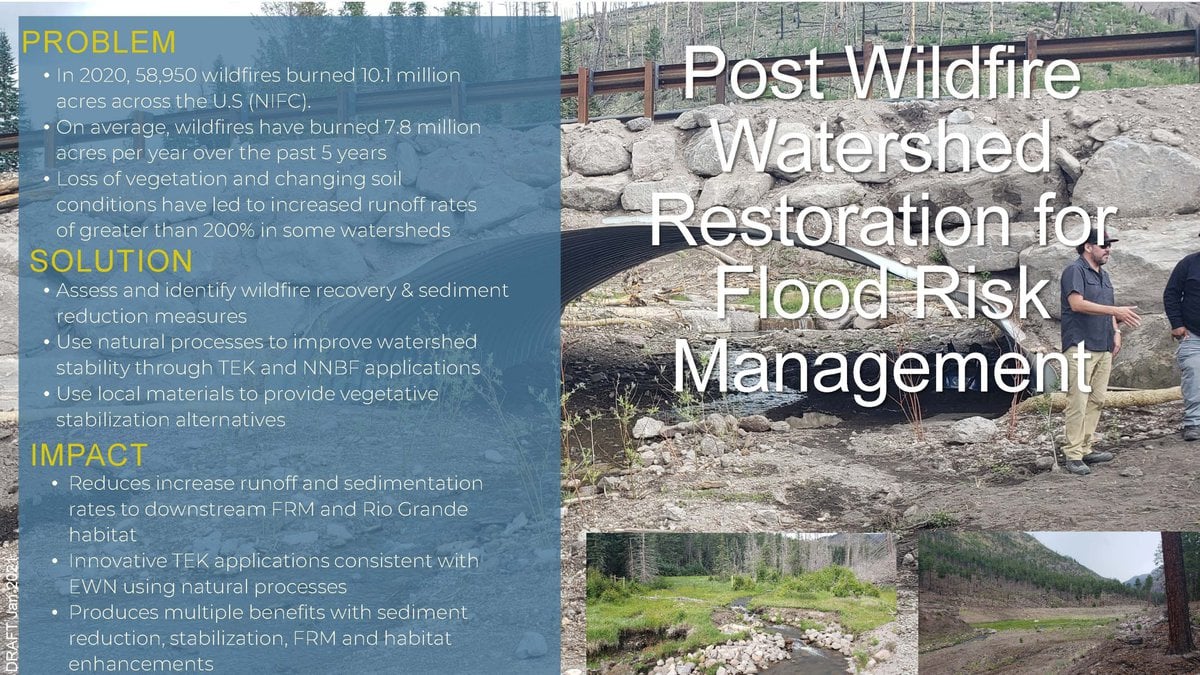Wildfires can cause extreme loss of vegetation and soil instabilities that make affected areas highly susceptible to increased runoff, flooding, and transport of debris, and reduced quality of aquatic and terrestrial habitat and water quality. Managing wildfire recovery efforts by applying EWN principles has the potential to provide a wide range of flood risk management benefits while increasing co-benefits for the entire watershed. This project will develop, test and monitor EWN wildfire FRM and erosion control projects to provide state-of-the-art science for future wildfire recovery efforts. Special emphasis will be placed on in-situ material usage for restoration and vegetation management alternatives. In addition a watershed stability tool-FluvialGeomorph will be used to assess the high-resolution terrain data available to determine channel and watershed stability trends which will assist in determining the type and location for EWN practices.

A Case Study – The Santa Clara Pueblo Story
The Santa Clara Canyon, homeland of the Santa Clara Pueblo Tribe for generations, was devastated by a series of catastrophic wildfires and post-fire flooding that severely impacted the Tribe’s ecosystem, economy, and cultural heritage. This case study highlights the Pueblo’s leadership in advancing watershed restoration through nature-based solutions and interagency collaboration. By combining traditional ecological knowledge with bioengineering practices, the Santa Clara Pueblo developed a sustainable, community-centered approach to flood risk management that has strengthened the resilience of the canyon and restored access to this sacred landscape. Learn more in this Overview and Story Map prepared by our partners.
Supporting Work
Wildfire Impacts on Snowpack Phenology Within the Western U.S., by Jeremy Giovanda

